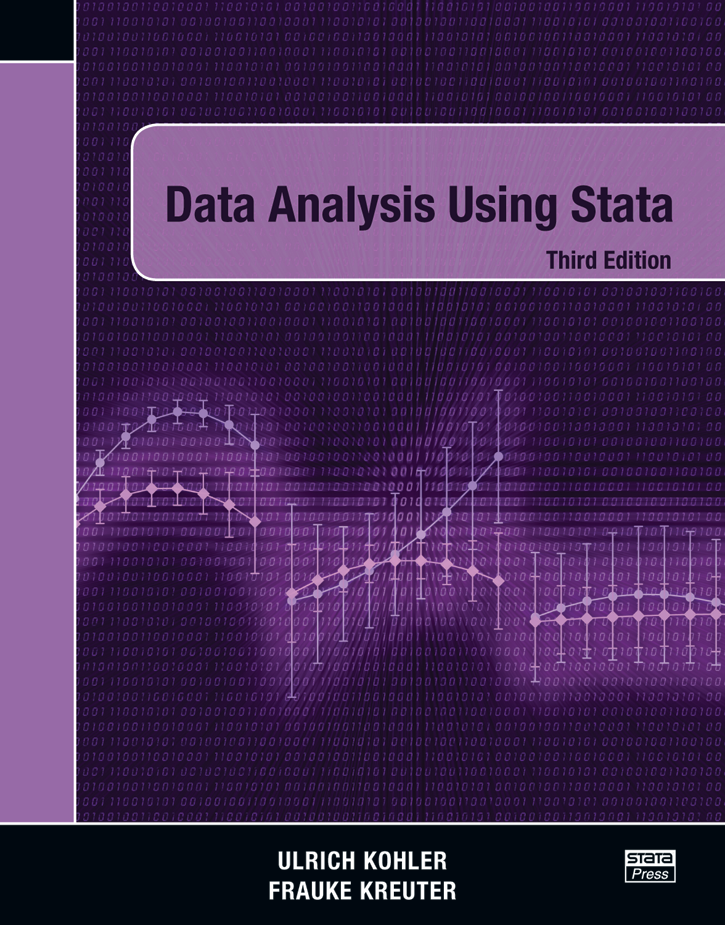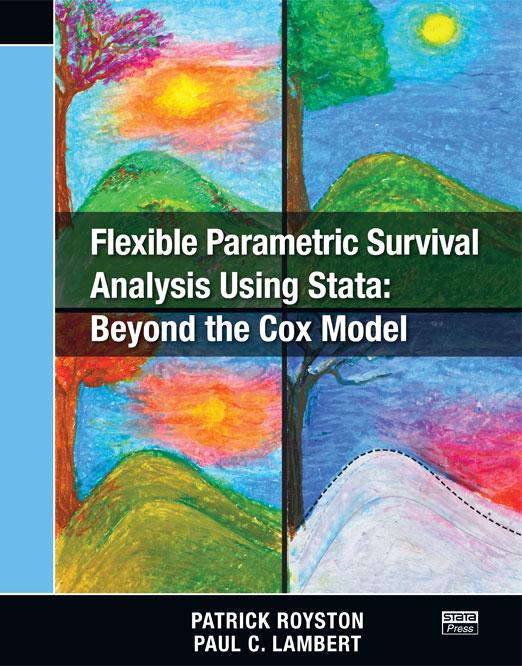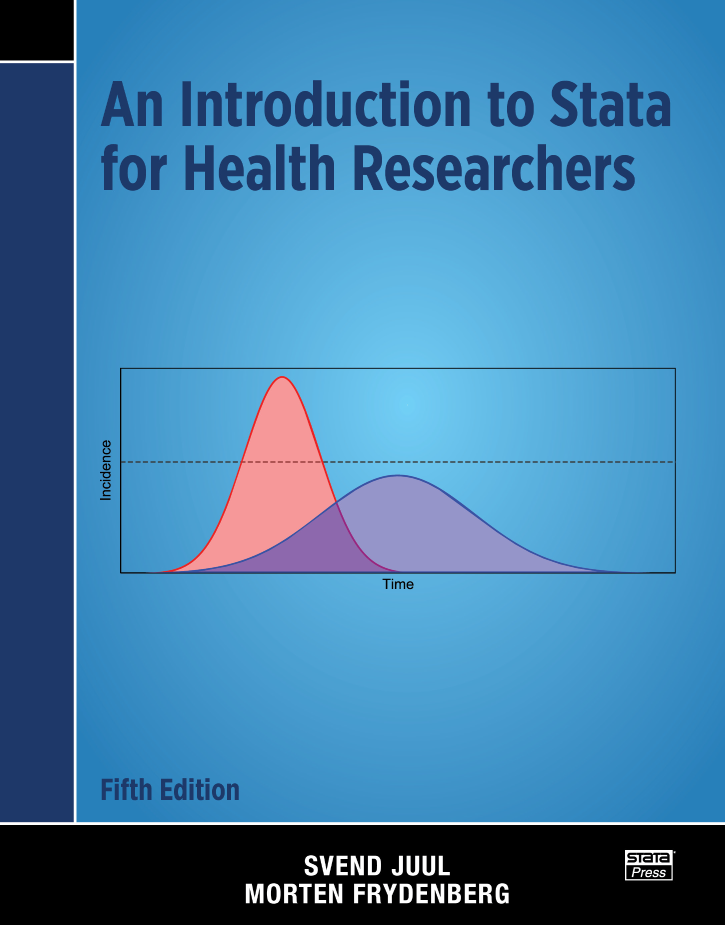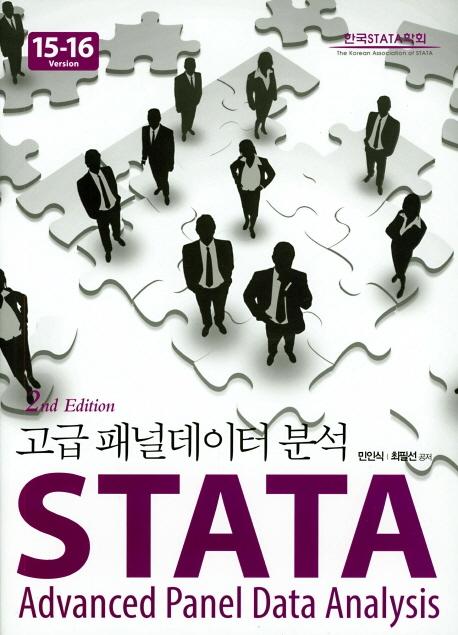
Data Analysis Using Stata, Third Edition
87,000원
Authors: Ulrich Kohler and Frauke Kreuter Publisher: Stata Press Copyright: 2012 ISBN-13: 978-1-59718-110-5 Pages: 497; paperback
Data Analysis Using Stata, Third Edition has been completely revamped to reflect the capabilities of Stata 12. This book will appeal to those just learning statistics and Stata, as well as to the many users who are switching to Stata from other packages. Throughout the book, Kohler and Kreuter show examples using data from the German Socio-Economic Panel, a large survey of households containing demographic, income, employment, and other key information.
Kohler and Kreuter take a hands-on approach, first showing how to use Stata’s graphical interface and then describing Stata’s syntax. The core of the book covers all aspects of social science research, including data manipulation, production of tables and graphs, linear regression analysis, and logistic modeling. The authors describe Stata’s handling of categorical covariates and show how the new margins and marginsplot commands greatly simplify the interpretation of regression and logistic results. An entirely new chapter discusses aspects of statistical inference, including random samples, complex survey samples, nonresponse, and causal inference.
The rest of the book includes chapters on reading text files into Stata, writing programs and do-files, and using Internet resources such as the searchcommand and the SSC archive.
Data Analysis Using Stata, Third Edition has been structured so that it can be used as a self-study course or as a textbook in an introductory data analysis or statistics course. It will appeal to students and academic researchers in all the social sciences.
Ulrich Kohler is a sociologist at the Social Science Research Center Berlin (WZB). Dr. Kohler is an organizer of the German Stata Users Group meetings.
Frauke Kreuter is an associate professor at the Joint Program in Survey Methodology (JPSM) in the University of Maryland–College Park, professor at the Statistics Department in the Ludwig-Maximilians-University of Munich, and currently head of the Statistical Methods group at the Institute for Employment Research (IAB) in Nuremberg, Germany.
Both authors are associate editors of the Stata Journal. They coauthored a German textbook, Datenanalyse mit Stata, which was the predecessor of this book. They used Data Analysis Using Stata to teach several classes and short courses at the University of Mannheim, the University of Konstanz, the Free University of Berlin, and the University of California–Los Angeles, among others.
1.2 Setting up your screen
1.3 Your first analysis
1.3.2 Files and the working memory
1.3.3 Loading data
1.3.4 Variables and observations
1.3.5 Looking at data
1.3.6 Interrupting a command and repeating a command
1.3.7 The variable list
1.3.8 The in qualifier
1.3.9 Summary statistics
1.3.10 The if qualifier
1.3.11 Defining missing values
1.3.12 The by prefix
1.3.13 Command options
1.3.14 Frequency tables
1.3.15 Graphs
1.3.16 Getting help
1.3.17 Recoding variables
1.3.18 Variable labels and value labels
1.3.19 Linear regression
1.5 Exiting Stata
1.6 Exercises
2.1.2 Alternative 2
2.2.2 Line breaks
2.2.3 Some crucial commands
2.4 Exercises
3.1.2 The variable list
Abbreviation rules
Special listings
3.1.4 The in qualifier
3.1.5 The if qualifier
3.1.6 Expressions
Functions
3.1.8 Using filenames
3.2.2 The foreach loop
Several commands within a foreach loop
Analytic weights
Sampling weights
4.2 Estimation commands
4.3 Exercises
5.1.2 Some examples
5.1.3 Useful functions
5.1.4 Changing codes with by, n, and N
5.1.5 Subscripts
5.2.2 The egen command
5.4 Recoding date and time
5.4.2 Time
5.6 Labels
5.7 Storage types, or the ghost in the machine
5.8 Exercises
6.2 Graph types
6.2.2 Specialized graphs
Marker colors
Marker size
Lines
Plot region
Scaling the axes
Labeling inside the plot region
Tick lines
Axis titles
The legend
Graph titles
6.4.2 Option by()
6.4.3 Combining graphs
6.6 Exercises
7.2 Variables with few categories
More than one frequency table
Comparing distributions
Summary statistics
More than one contingency table
Bar charts
Pie charts
Dot charts
Special techniques for grouping data
The summarize command
The tabstat command
Comparing distributions using statistics
Histograms
Kernel density estimation
Quantile plot
Comparing distributions with Q–Q plots
8.1.2 Creating fictitious datasets
8.1.3 Drawing random samples
8.1.4 The sampling distribution
8.2.2 Standard errors for complex samples
Sampling distributions for complex samples
Using Stata’s svy commands
Item nonresponse and multiple imputation
Significance tests
Two-group mean comparison test
Counterfactual concept of causality
8.3.3 Some problems of causal inference
9.1.2 Linear regression using Stata
The table of ANOVA results
The model fit table
9.2.2 More computations
Standardized regression coefficients
Influential cases
Omitted variables
Multicollinearity
9.3.3 Violation of Cov(εi, εj) = 0, i ≠ j
9.4.2 Interaction terms
9.4.3 Regression models using transformed variables
Eliminating heteroskedasticity
9.5.2 Plots of coefficients
9.5.3 Conditional-effects plots
9.6.2 Regression models for panel data
Fixed-effects models
10.2 Basic concepts
10.2.2 Excursion: The maximum likelihood principle
Interpretation with odds ratios
Probability interpretation
Average marginal effects
10.3.3 The model fit block
Pearson chi-squared
10.4.2 Influential cases
10.6 Refined models
10.6.2 Interaction effects
10.7.2 Multinomial logistic regression
10.7.3 Models for ordinal data
11.2 Importing machine-readable data
Reading SAS transport files
Reading other system files
Reading data in free format
Reading data in fixed format
11.3.2 The input command
11.4.2 The merge command
Merge 1:1 matches with nonrectangular data
Merging more than two files
Merging m:1 and 1:m matches
11.6 Handling large datasets
11.6.2 Using oversized datasets
12.2 Four programming tools
Combining local macros
Changing local macros
12.2.3 Programs
The problem of naming
The problem of error checking
12.3.2 Create a first ado-file
12.3.3 Parsing variable lists
12.3.4 Parsing options
12.3.5 Parsing if and in qualifiers
12.3.6 Generating an unknown number of variables
12.3.7 Default values
12.3.8 Extended macro functions
12.3.9 Avoiding changes in the dataset
12.3.10 Help files
13.2 Taking care of Stata
13.3 Additional procedures
13.3.2 SSC ado-files
13.3.3 Other ado-files




